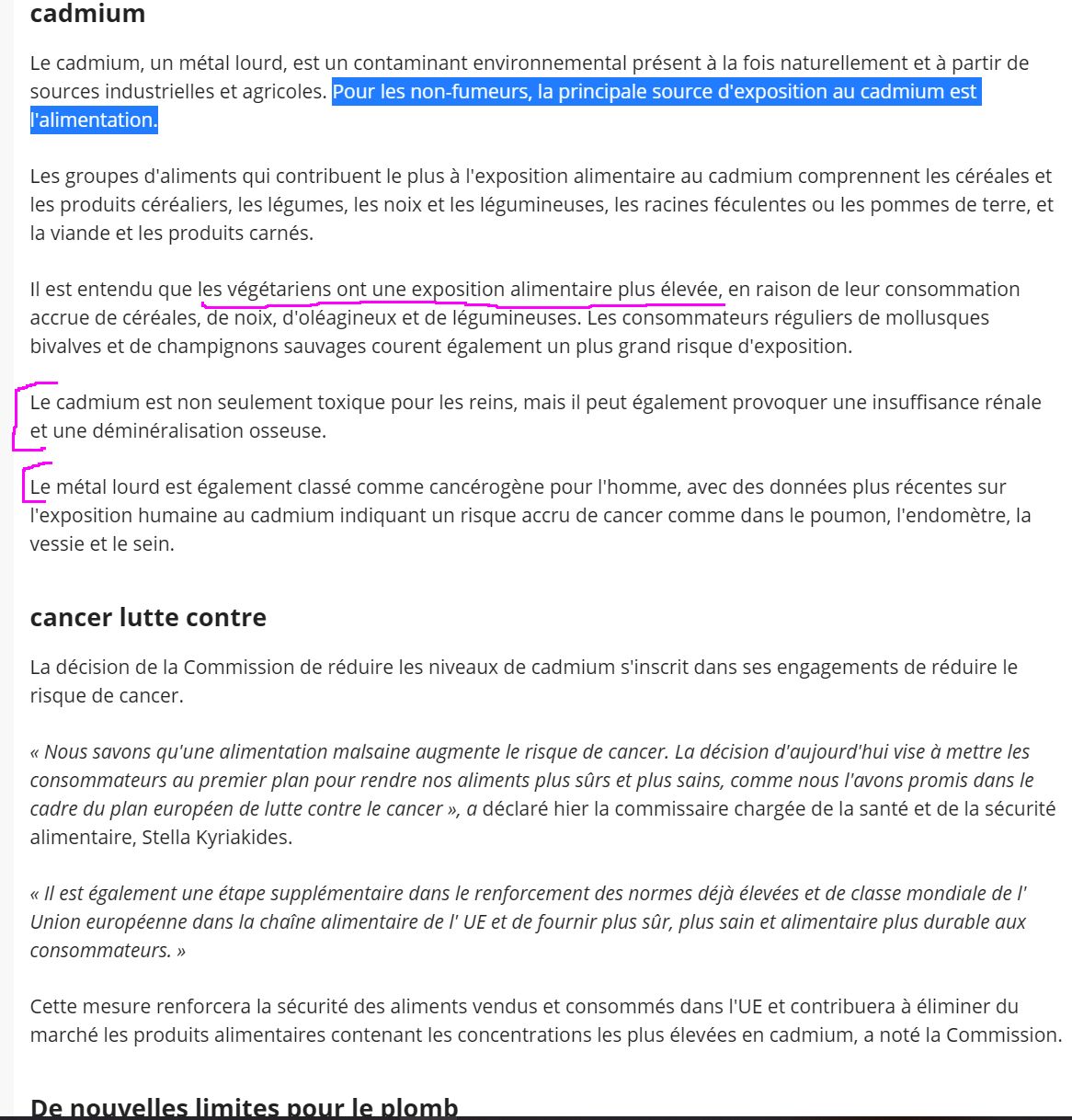Traduction de l'étude
 La consommation d'aliments végétaux est associée à une charge corporelle en cadmium plus faible chez les adultes d'âge moyen
La consommation d'aliments végétaux est associée à une charge corporelle en cadmium plus faible chez les adultes d'âge moyen
Kristine K. Dennis, European Journal of Nutrition volume 60, pages 3365–3374 (2021)
Objectif
L'apport alimentaire est une source principale d'exposition au cadmium (Cd) dans la population non-fumeur. Les aliments végétaux contenant des composés végétaux liant les métaux tels que les polyphénols, les phytates et les phytochélatines peuvent réduire la biodisponibilité du Cd et réduire la charge corporelle en Cd. Dans cette étude, nous avons étudié l'association entre la consommation d'aliments végétaux et le Cd ajusté à la créatinine urinaire (uCd), un marqueur bien établi de la charge corporelle en Cd.
Méthodes
Les participants provenaient d'un échantillon transversal de 1901 adultes de la cohorte REasons for Geographic and Racial Differences in Stroke (REGARDS). L'apport alimentaire a été évalué à l'aide d'un questionnaire de fréquence alimentaire. Nous avons créé un score d'aliments végétaux (PFS) de 12 points basé sur l'apport déclaré dans sept catégories (fruits, légumes, légumineuses, noix/graines, grains entiers, thé et vin). Des scores plus élevés indiquent une consommation plus élevée et une plus grande diversité de l'apport alimentaire végétal. Des modèles de régression linéaire multivariée ont été utilisés pour estimer l'association entre la PFS et l'uCd. En raison de l'influence de l'âge et du tabagisme sur le statut Cd, des analyses stratifiées ont été réalisées.
Résultats
La PFS moyenne était de 5,4 (SD 2,2) et la uCd moyenne était de 0,53 µg/g de créatinine (SD 0,39). Dans les modèles ajustés, la PFS n'était pas associée à l'uCd (p > 0,05). Dans les analyses stratifiées, la SSP était inversement associée à l'uCd (p = 0,047) avec une SSP supérieure de 1 point associée à une uCd inférieure de 0,018 µg/g chez les adultes d'âge moyen (45-59). Aucune association significative n'a été observée entre la SSP et l'uCd chez les adultes plus âgés (≥ 60). L'association de la PFS et de l'uCd ne différait pas selon le statut tabagique.
Conclusion
Nos résultats suggèrent qu'une consommation plus élevée d'aliments végétaux est associée à une charge corporelle en Cd plus faible chez les adultes d'âge moyen, mais pas chez les adultes plus âgés


 Forum Nutrimuscle, Nutrition, musculation, transparence !
Forum Nutrimuscle, Nutrition, musculation, transparence !  Actualités, vidéos, études scientifiques
Actualités, vidéos, études scientifiques
![]() par Nutrimuscle-Conseils » 12 Aoû 2021 17:04
par Nutrimuscle-Conseils » 12 Aoû 2021 17:04 
![]() par Nutrimuscle-Conseils » 15 Aoû 2021 10:07
par Nutrimuscle-Conseils » 15 Aoû 2021 10:07 ![]() par Nutrimuscle-Diététique » 16 Aoû 2021 16:23
par Nutrimuscle-Diététique » 16 Aoû 2021 16:23 










